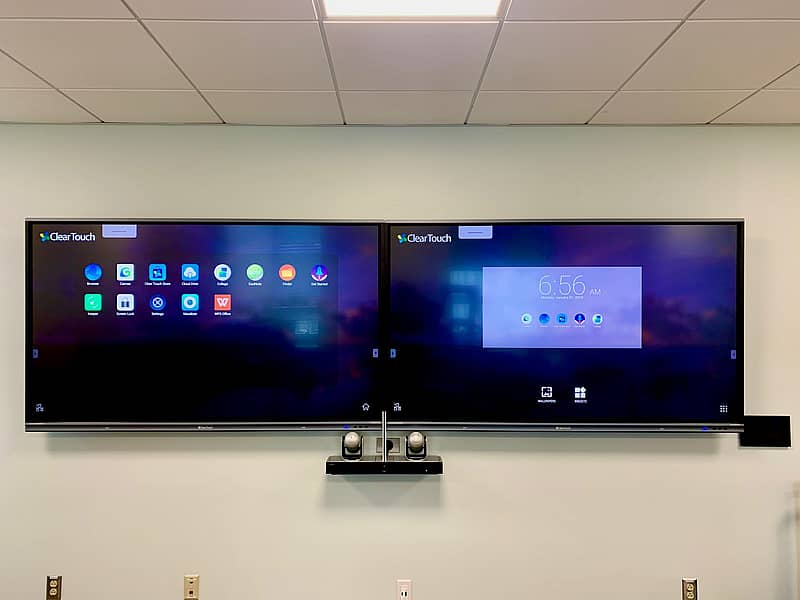Every student has a unique learning style and pace of learning. As individuals, students need environments where they can learn and challenge themselves academically. Interactive learning environments adapt to individual learning styles while fostering teamwork. You might wonder, what is an interactive learning environment? We have a few tips to get you started.
What is an Interactive Learning Environment?
An interactive learning environment is a teaching approach that incorporates immersion and learning, where students participate in education. When people consider what an interactive learning environment is, they may think this solely refers to digital eLearning. However, this is not always the case. Interactive learning environments use various tools and methods to create engaging student-centered experiences.
Student-Teacher Interaction
At the heart of interactive learning situations is student-teacher interactions. The mutual exchange of information creates a classroom where students feel heard, recognized, and motivated. Online and offline learning environments require engagement and feedback for their interactive components. However, unlike offline interactive environments for learning, online interactions and interactivity do not depend on real-time, immediate interaction. Instead, the interactive environment is often held at different times, including other time zones.
Read More: Creative Innovations for Teachers in Modern Classrooms
Benefits of Interactive Environments
Environments that offer interactive learning have several benefits for learners. Among the benefits are enhanced motivation and engagement with active participation. Students can develop better social and emotional skills and improve work or class performance. With greater interactive opportunities, there is greater student satisfaction, leading to more learning engagement. Learners in an interactive environment learn to give and receive feedback that helps them develop interpersonal and work skills. When learning is interactive, the enhanced motivation encourages students to pursue greater goals. These skills and motivations lead to stronger performance in work situations.
A primary benefit of learning interactively, at varying times, is flexibility. Students can learn at their own pace, and instructors do not need to be present to teach in online situations. Another benefit is immediate feedback from built-in tools that give timely information about a student’s strengths and areas for improvement. Greater student autonomy is possible with interactive learning environments to create independent learning but at the same time, interactive learning creates opportunities for easier collaboration. Students learn how to work both alone and as part of a team!
Drawbacks
Flexibility in interactive learning environments has drawbacks. One being the lack of emotional engagement within interactive digital learning, which is critical to motivation. A good classroom atmosphere and effective instructor interaction help improve instruction. Student perception of and responses to a learning environment are critical for learning performance. An online interactive learning environment, while convenient for students and teachers, leaves students isolated without the opportunity to relate to other students and instructors on a deeper, more engaged, and motivated level. This isolation is partially remedied with the instructor contacting and engaging more with students. However, for student-teacher interactive learning to succeed, both must attempt to communicate.
How to Create an Interactive Learning Environment
When you wonder how to create what is an interactive learning environment, your first consideration is your goals for your students. Setting goals helps you to create relevant content and experiences. Goals depend on your audience, the learning setting, the resources available, and how much time you have to teach the material. Some goals to consider are:
1. Engagement and Participation
Learning is not a passive experience but a process involving the material. Students learn when they are engaged in the course material because they can participate. An example of engaging materials is student-led, instructor-facilitated discussions with an interactive projector such as the one from EPSON. Laser pointers and augmented reality tools are also useful accessories for student attention.
2. Collaboration and Communication
Interactive learning is not a solo act. In any setting, educational or corporate, students and team members need to learn to work together. Implementing group projects, collaboration through shared documents, and in-person or virtual meeting spaces can create places where learners practice collaborating and communicating.
3. Community-Building
Community is critical for student engagement. Isolation can lead to discouragement for students. But how do you build community in a virtual environment? Some ways you can build community are:
- Reach Out Early and Often. Connect with students early during the instructional period to motivate them. Send welcome emails to introduce yourself. Be consistent in your efforts to keep in touch and have regular office hours.
- Limit Lecture Time to Increase Discussion. Strengthen the relationships you create with students, facilitating interactions between students and instructors. Limiting lectures and increasing time for students to talk and ask questions helps create opportunities for interactive learning.
4. Use Tech in the Virtual Classroom
Online facilitates interactive discussions. For example, you can break students into smaller groups using chat rooms and have whole-group or individual-group discussions. Online chat is also useful for multiple and simultaneous discussions. Helpful tools in your classroom include large display interactive screens such as the Promethean brand so your students can see their work, audio easily heard throughout the classroom, and software relevant to the subject you teach.
5. Real-World Application
Skills that students acquire should relate to how they will implement their learning outside of the classroom. Internships, projects, and in-class lessons should reflect what they would do in their daily lives and work lives. Connect theoretical knowledge through demonstrating skills and speaking about how these skills are relevant to future work and other real-life applications.
6. Feedback and Assessment
Feedback is essential to understanding how your interactive learning environment is working. Quizzes are used to test learner knowledge and assess if individuals are learning and at what pace. Incorporate peer, self, and instructor assessments in your interactive learning to gauge success. Having interactive technical capabilities, such as the ClearTouch screens or projectors, can help all students participate in assessments.
4 Things to Consider When Upgrading A/V in School Environments
Overcoming Interactive Learning Hurdles
While interactive learning is a powerful tool for engaging students, these methods can present problems. Some issues are:
1. Technical Issues
Some students may not have access to newer operating systems or may have low-bandwidth internet with infrequent connections. For these students, scaling down your training can help. For example, don’t use large media files and keep content brief. Learners may not understand the tech you use. Providing tech support to new users can help bridge the gap in their knowledge. Technologically adept learners may also run into technical issues that need support.
2. Adapting Curriculum
Moving from an offline, paper-based curriculum can be a challenge. The traditional curriculum is static and quickly out-of-date, but known. Learners may resist changing from a paper-based, instructor-led curriculum to an interactive one. But you can help lead them to this new approach. Incrementally integrate interactive learning into the curriculum. A per-unit or module approach is helpful to students unaccustomed to interactive and online learning environments. Ask for feedback from students, and incorporate this feedback into your lesson practices gradually as you implement the online curriculum.
3. Teacher Workload
Preparing new interactive lessons can initially increase instructor workload. Providing professional support and using tools to streamline creating and delivering interactive content is helpful.
4. Online Distractions
Looking at a screen all day can be boring. Online distractions happen when you don’t provide dynamic content. To stop distracted behavior, keep lectures short, and provide opportunities for learners to interact with you and other learners. Chat and breakout rooms, for example, keep learners engaged. For lessons, use quizzes and games related to the coursework to grab the learner’s attention.
5. Social Isolation
Learning is not only about skills and knowledge but also about social interaction. Emotional intelligence is as important as cognitive intelligence for learners to thrive. Students may feel isolated without interactions in a traditional classroom. Virtual discussions, social events, and virtual group activities are critical to foster a sense of community. Encourage learners to find peer support and collaboration.
6. Disabilities and Support Needs
Some learners may have problems with online training because of disabilities or learning difficulties. For example, people with hearing or sight impairment might need help navigating coursework. Creating accessible content such as keyboard shortcuts, captioning of video and audio resources, and voice-over descriptions of graphics and text will help people with hearing, sight, or other disabilities access content.
Disabilities or learning difficulties are not always physically obvious. Remember, not everyone learns at the same pace or in the same way. Learning is not a competition where someone needs to be the quickest, the smartest, or the best. Instead, interactive learning environments are about each learner’s participation.
Conclusion
Your Pro AV Systems team works with you to understand your education needs. We value creating interactive learning environments where students collaborate, learn skills, and adapt to new skills. We help you design interactive systems to match your curriculum and are transparent with costs. Working with Pro AV Systems on your next interactive learning project gives you the expertise you need. Contact us for more information and ask for a quote.




